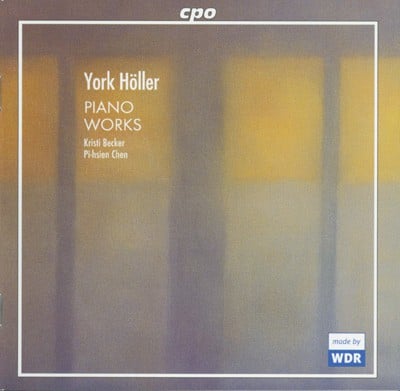Boosey & Hawkes
Even though my Second Piano Sonata bears the subtitle "Hommage à Franz Liszt," it is not a stylistic ingratiation in the sense of neo-romanticism and nostalgia, but rather a composition that attempts to add something distinctive to "great piano playing" through the structural means of modern music. The composition thus refers in a thoroughly ambivalent manner to Franz Liszt, the brilliant pianist, important inspirer, and generous supporter of everything new. From among his many-sided compositional oeuvre, several works, which are considered singular "masterpieces," stand out. These certainly include the Etudes d’exécution transcendante and several late piano pieces in which impressionistic harmony, bitonality, and indeed atonality are already anticipated: in the seventh and eighth measures of "Feux follets" from the Etudes is found, for example, a daring "bitonal" figure that – divided between the two hands – consists of the notes G–E– C–A–D-flat–B-flat–F-sharp–E-flat. Out of this "repertoire of tones," I developed the following structure:
Through the translation of this constellation of tones into corresponding durations of tones (on the basis of the proportion 5:6), a metric and – through the process of projection – formal framework for the whole composition came into being. It accordingly consists of eight sections that are clearly separated from one another in terms of their musical characteristics. Alongside this "germ cell," which provides the structural unity, two further motifs from "Feux follets" assume a musical function that goes beyond the often "anecdotal" character of a quotation: the thirty-second–note figure at the beginning, made up of an irregular chromatic scale, and the incisive rhythmic motif in measure 9. In the course of my work, yet another Lisztian element ultimately comes into play: the striking tritone motif from the beginning of the late piano work Unstern (after Baudelaire). All three motifs are processed, combined with one another, etc., in various ways – in a word: "developed." This "sonata" thus lacks the moment of the "exposition," which has become formally superfluous, since literally everything is "development," but one in which "the ear vitally hears in the material what has become of it." (Adorno, "Vers une musique informelle"). The Second Piano Sonata is dedicated to my partner of many years, Gisela Sewing, who passed away unexpectedly in July 1987.

Pi-hsien Chen
CPO 999 954-2 (2003)
